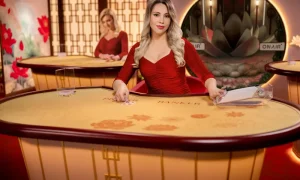A Guide to Trading Baseball and Softball Trading Pins

Before the pandemic, there were more than 2 million youth baseball players between 13-17. That made it the second most popular sport, right behind basketball. Participation in softball grew by 12%.
These sports carry a lot of promise because of high participation levels. There are also rich traditions at every level of the sports, with the most popular one being trading pins.
Are trading pins worth collecting? Of course, they are.
They’ll bring you into the tradition of baseball and softball. They’ll also be memorable keepsakes later on. You can look back at your trading pin collection and recount the stories of how you got the pins.
Plus, it’s a fun hobby.
Do you want to start a collection of softball and baseball trading pins but have no idea what to do? You’re in the right place because you’re about to learn the secrets of trading pins. Keep reading to discover how you build your collection.
Know the History of Trading Pins
Where did trading pin madness begin? It started with the modern Olympics in 1896. There wasn’t a way for athletes to identify which country they were from.
They used cardboard discs with the colors of each country. These ended up being passed around and eventually traded as pins.
The popularity of baseball trading pins heated up in the 1940s. Baseball teams and fan groups held events just to trade pins.
This can come in handy during a conversation with someone. You could bring it up and impress them with your knowledge. They might be a little more willing to negotiate for a cool trading pin.
The Number One Rule of Trading Softball and Baseball Trading Pins
There will be a time when you get an awesome trading pin and want to show it off.
You wear it or attach it to your backpack for all the world to see that you have this awesome trading pin. Someone comes up to you and expects you to trade the pin.
You tell them that there’s no deal to be made. They walk away a bit angry with you, leaving you to wonder what the big deal is.
Well, there’s a rule when it comes to trading pins for softball and baseball.
Only display the pins that you intend to trade. Yes, even if you’re very proud of the shiny new pin you scored, you should put it away.
A Few Other Helpful Trading Pin Rules
Remember, sports trading is for fun. Always approach pin trading with a smile. You’re going to come across veteran pin traders and other people who are new to the game.
Be helpful whenever you can. Ask questions of veteran traders to learn as much as you can about pin trading. You’ll find that you’re now part of a friendly community.
You should be able to find a few experienced folks willing to help you out.
Pass that knowledge on and educate people who don’t know a lot about the art of collecting pins.
You might come across a trading pin that you really want. Trading pins is like playing poker. You can’t show your eagerness to get that pin.
You immediately put yourself at a disadvantage. The trader knows that they can make you a bad offer and you’ll take it. It’s a friendly community, but shrewd.
Hide your emotions when you’re trading pins. You’ll trade objectively and always get a good deal.
If you see people negotiating a trade, don’t get in between them. It’s rude and is not good trading etiquette.
One final rule to remember. Trading pins are special. They’re also property that people take very seriously. Don’t touch other people’s trading pins without their permission.
Know the Value of the Trading Pins
When you first start out, you’ll think that all baseball trading pins look the same. They have similar materials and designs.
Baseball and softball teams might only have printed pins enough pins just for the players. That creates exclusivity, but the players will have to choose between their team’s pin and getting another one.
They’ll want to have something incredibly special to make it worthwhile. You might have to trade a rare pin or trade a couple of your favorites.
Teams often decide to make special editions of pins. They’ll give kids one set of pins for being on the team. They’ll create a set of trading pins just for that tournament for trading purposes.
They might have pins with different colors or designs to make the trading pins rare. That makes them even more valuable to traders.
Other things that make a pin rare or unique are the options when designing the pins. You can create larger pins, which immediately makes them more valuable to kids, parents, and coaches.
Features like glow in the dark, glitter, and blinkers add fun to the trading pins. People trading just for fun will want to have them.
Where to Get Softball and Baseball Trading Pins
There are a number of places to go to find softball trading pins and baseball trading pins. You can attend baseball and softball tournaments.
This is a sure thing if you’re already a youth sports parent or a coach.
You can also attend collectors’ events. There are trade shows and events all over the country. Check out Facebook groups and do an online search to find events near you.
Before you attend an event, get clear as to what you want to get out of it. It can take the overwhelm out of large events and give you a strong focus.
The Secrets of Softball and Baseball Trading Pins
If you want a fun hobby, there’s not a better one than collecting baseball and softball trading pins. Hopefully, you learned some of the basic etiquette tips for sports trading. You’ll be able to build a great collection in no time.
Did you like learning about trading pins? You’ll love the other articles on the blog. Head over to the home page and check them out today!








